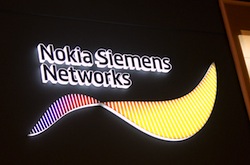Nokia Siemens Networks has launched a new solution designed to seamlessly integrate wireless local area networks (WLAN) with mobile networks by creating a heterogeneous network with traffic steering capabilities.
Entitled Smart Wi-Fi, the solution consists of four elements – Smart Wi-Fi Connect, Smart Wi-Fi Converge, Smart Wi-Fi Optimize and Smart Wi-Fi Personalize.
NSN said the complete solution provides service capabilities that enable operators to analyse, plan and deploy their own WiFi networks, as well as integrating with partner WiFi networks and optimising performance.
Device management and subscriber authentication for WiFi networks is included, as well as tools for managing security, billing, policy control, delivering cellular services over WiFi, traffic-steering and subscriber experience management.
“Nearly all smartphones and tablets have the ability to use WiFi. Operators have a clear opportunity to use this mature, cost-effective technology to enhance the experience of mobile broadband, especially in underserved indoor public areas”, said NSN’s Randy Cox, head of Small Cell Product Management.
“With our Smart Wi-Fi, mobile operators can integrate and control WiFi networks to deliver a cellular-like experience on WiFi as part of a broader HetNet”.
Meanwhile, NSN has also expanded its small cells portfolio.
Its flagship Flexi Zone architecture has been extended to include new Micro and Pico base stations for LTE and WiFi.
According to NSN, the new next generation technology is designed to be deployed in “hot zones” – areas of high subscriber density such as shopping malls and airports – so that operators can evolve initial hotspot deployments to scale up capacity while lowering costs as compared to a traditional small cells deployment.
“To support the dramatic growth in mobile broadband demand, operators will need to significantly increase capacity in high-traffic areas by adding small cells that complement their macro network,” said NSN’s Bill Payne, head of the small cells business.


